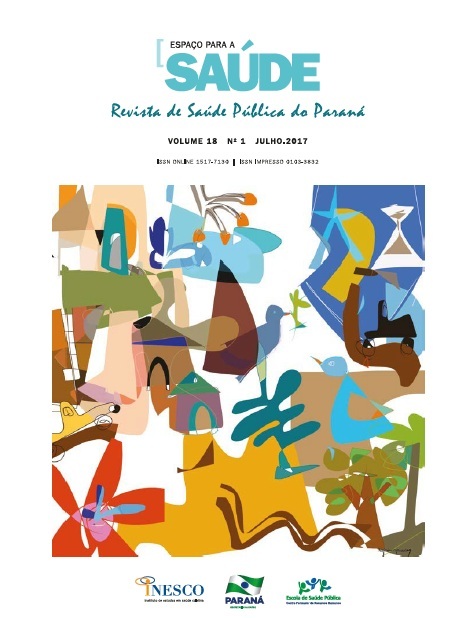Quality of life of users of the Program Hiperdia of a Basic Health Unit in the city of Guarapuava/PR
DOI:
https://doi.org/10.22421/15177130-2017v18n1p64Keywords:
Diabetes mellitus, Arterial hypertension, Quality of life.Abstract
OBJECTIVE: To evaluate the socioeconomic aspects and the quality of life of hypertensive and diabetic individuals of the program HIPERDIA of a Basic Health Unit (UBS).
MATERIAL AND METHODS: Twenty seven users of the program HIPERDIA participated in the study. SF-36 Questionnaire and a socioeconomic evaluation file were used.
RESULTS: The average age was 56,93 ± 10,14, 74% are women, 63% are married, 63% have systemic arterial hypertension (SAH), 22,2% have SAH and diabetes, 14,8% diabetes, and 70,4% have an income of 1 to 4 minimum wages. The medium values of the SF-36 questionnaire domains were above 50 points.
FINAL CONSIDERATIONS: SAH is predominant. Women are the majority, probably because the search for, and compliance with treatment are greater within the female gender. QV was positive, which may be a reflection of the follow-up undertaken at the UBS.
Downloads
Published
How to Cite
Issue
Section
License
Copyright (c) 2017 Espaço para a Saúde

This work is licensed under a Creative Commons Attribution 4.0 International License.
Authors who publish in this journal agree to the following terms:
- Authors grant the journal the copyright, with the work simultaneously licensed with Creative Commons CC BY, which allows the sharing of work with recognition of authorship and initial publication in this journal.
- Authors are authorized to assume additional contracts separately, for non-exclusive distribution of the version of the work published in this journal (e.g., to publish in an institutional repository or as a book chapter), with authorship recognition and initial publication in this journal.
- Authors are permitted and encouraged to publish and distribute their work online (e.g., in institutional repositories or on their personal page) at any point before or during the editorial process, as this can generate productive changes, as well as increase the impact and the citation of the published work (See The Effect of Free Access).






